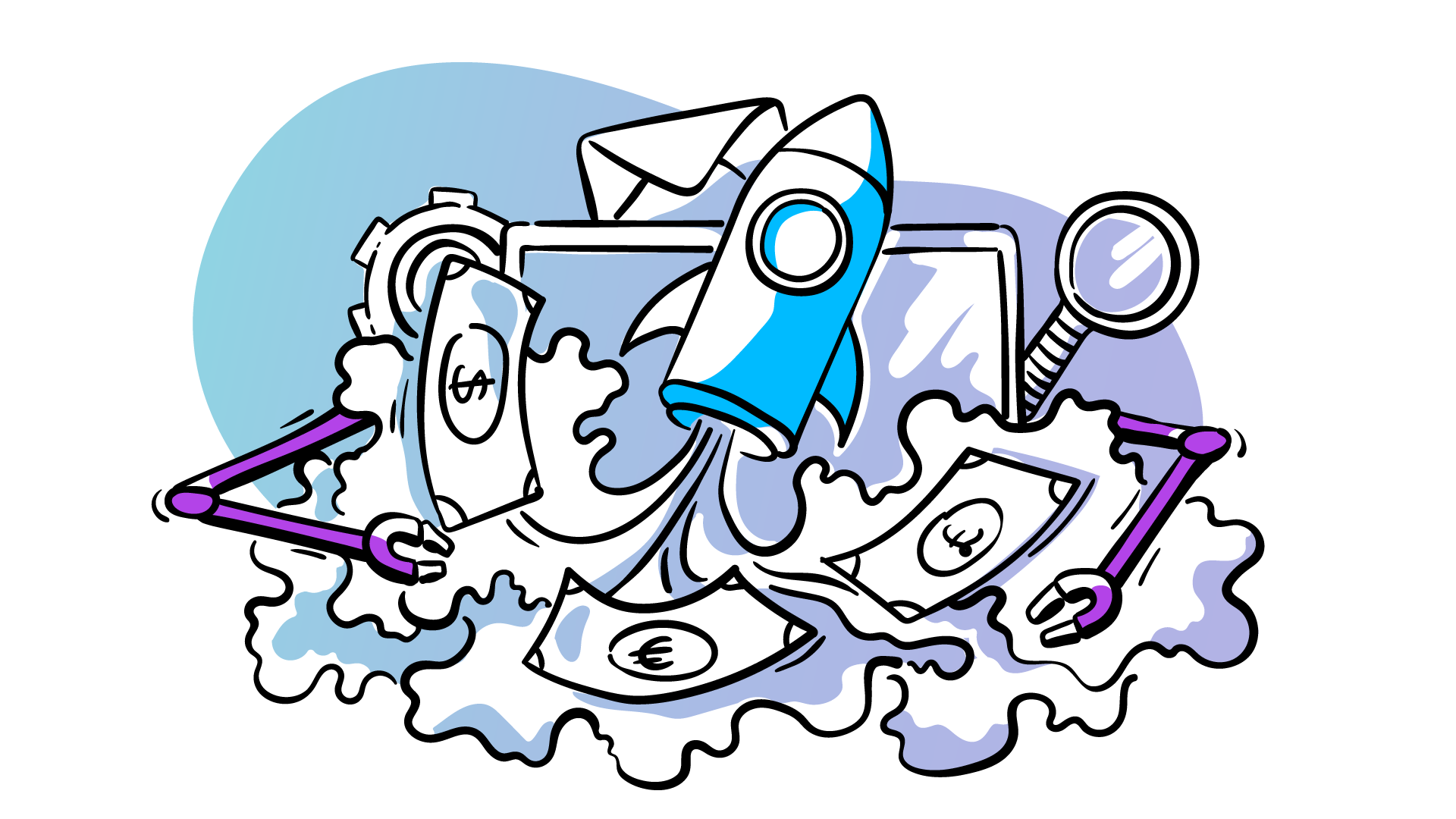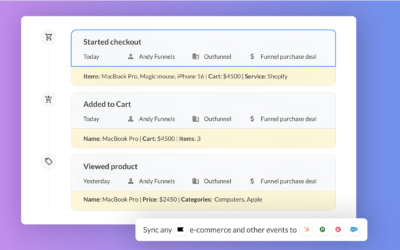Imagine not worrying about sending follow-up emails or scheduling meetings yourself. Enter sales automation.
In this guide, we’ll tell you everything you should have ideally known earlier about your much-needed sidekick.
After this in-depth read, you’ll walk away with a rock-solid understanding of sales automation and a treasure trove of actionable ideas for automating your sales processes backed by real examples.
So, how about it? Ready to shift from being busy to being productive?
What is sales automation?
SALES AUTOMATION DEFINITION
In its simplest form, sales automation is the usage of any software to handle repetitive and time-consuming tasks in your sales process. Tasks that make you think, “Is this the best use of my time?”
In other words, sales automation is your secret weapon for scaling your efforts, managing your pipeline like a pro, and turning time-consuming tasks into background operations that handle themselves. If done right, it lets you focus on what matters most: building relationships and making those sales.
Still, don’t confuse sales automation with a ‘set it and forget it’ strategy. While it might be tempting to automate everything and recline in your ergonomic chair as the software does its magic, be cautious.
Sales automation is incredibly powerful, but it’s not a substitute for a salesperson. You’re not replacing the artisan craftsmanship; you’re giving that artisan superhuman speed and precision.
Take an example: automated emails can chase leads, but they’ll never have the nuanced understanding of when a softer approach might be more effective or when a prospect is just one thoughtful interaction away from becoming a customer. Automation serves as an amplifier for your skills and intuition, not a replacement.
So, as you venture into automating your sales tasks, remember to keep the balance between tech and touch.
Sales automation vs. marketing automation: How are they different?
Sales and marketing automation may seem like identical twins, but they’re more like siblings who excel in different sports. Sure, they’re both automation superheroes, but each has its own domain.
Marketing automation is the charming storyteller that nurtures relationships from a distance. It crafts your emails, schedules social media posts, and even segments your audience for personalized campaigns. In essence, it’s all about pulling people into your sales funnel.
Sales automation, on the other hand, is the closer, the one that walks potential clients through that funnel and gets them to commit.
Well, let’s put it this way. Marketing automation is your opening act, the drumroll that sets the stage. Sales automation is the main event, ensuring that once people are interested, they actually take action. They’re two sides of the same coin, essential for amplifying your business but employed in distinct ways.
And here’s the kicker: a robust tech stack makes these two get along like peas in a pod, harmonizing your sales and marketing data into a seamless operation.
11 top sales automation ideas with real examples to create your own playbook
Knowing the theory behind sales automation is good and all, but what’s the use if you can’t put it into practice, right? We’ll walk you through 11 hot automation ideas you can plug into your organizational sales process, with real-world examples that will have you saying, “Hey, I can do that!”
Here’s a snapshot of the sales processes we will explore automating with tech:
- Enriching CRM data for contacts.
- Managing your website chatbox.
- Moving lead information captured through forms into your CRM.
- Conducting email outreach.
- Ensuring consistent data across your marketing and sales tools.
- Prioritizing leads in your CRM.
- Assigning leads to sales reps.
- Scheduling meetings with prospects.
- Learning from your customer conversations.
- Onboarding new customer accounts.
- Raising invoices and getting paid on time.
Alright, folks, we’ve given you the trailer, but the blockbuster is about to begin. We will get granular on each of these 11 sales workflows. We’re not just scratching the surface here; we’re doing a deep dive covering:
- Understanding the task: First, we demystify each task for you. No jargon, just straight-up what it is and why it matters.
- Current scenario and issues: We’ll spell out how you’re probably doing these tasks now and why that might be a time sink or just plain inefficient.
- Automation benefits: Next, we bring in the game-changer, automation. We’ll show you how automating the task will not only make your life easier but also supercharge your sales process.
- Tips and tools: We offer insider tech tips to set up your automation like a pro.
- Real automation implementation examples: And because seeing is believing, we showcase how real businesses, like ourselves or even your competitors, are already nailing it with automation.
Let these much-needed automation ideas roll in!
1. Fill the gaps in your CRM data with automated lead enrichment
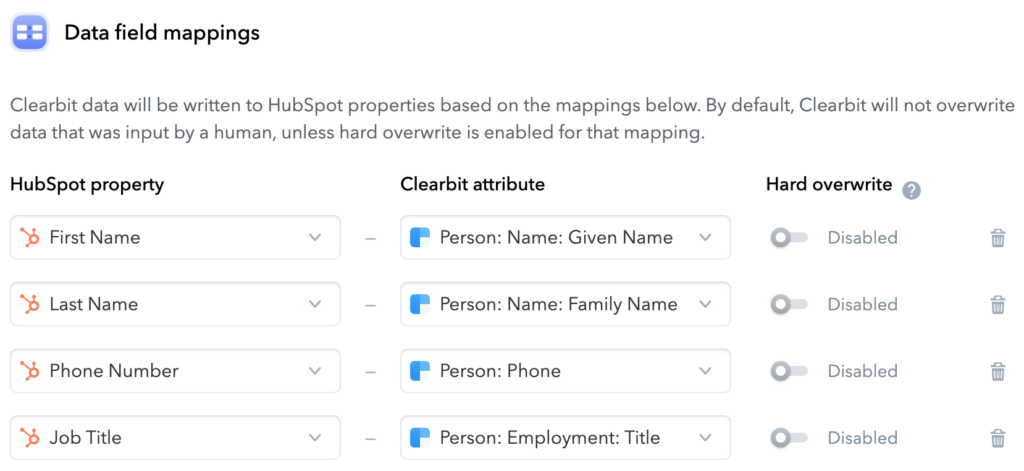
Ever find yourself staring at your CRM, looking at a sea of incomplete lead information? Ah, yes, the “John Doe” with no company name or the “XYZ Corp” with no contact email.
Incomplete lead information is like a puzzle of missing pieces, utterly frustrating and often useless. In sales, knowledge is power, and every missing piece of data can be a missed opportunity for outreach, customization, and relationship-building.
Right now, you’re probably doing the detective work manually. Googling company names, scouring LinkedIn, and maybe even guessing emails based on common corporate structures (we’ve all tried the john.doe@company.com gamble, haven’t we?).
Let’s not even talk about the time spent on this. The time you could have used following up with hot leads or finally beating your colleague at office ping pong.
Automation idea, benefits, and tips:
Imagine a world where the gaps in your CRM fill themselves. Welcome to the realm of automated lead enrichment.
Using AI and data scraping technologies, automated lead enrichment tools can complete your lead data for you. No more missing emails, no more incomplete records, and definitely no more wasted time.
The best part? This automation not only saves time but also ensures accuracy. You might even stumble upon data points you didn’t think to look for, like social media profiles or industry tags.
Setting up automated lead enrichment is a piece of cake in today’s tech landscape. Tools like Clearbit offer APIs that integrate directly with your CRM. Here’s a simple guide:
- Sign up for a lead enrichment tool.
- Connect it to your CRM using API keys.
- Configure what data you want to pull.
- Run a test to ensure it’s pulling the data correctly.
Real-world automation example:
At Outfunnel, we were keen to solve this equation. Why? Because we manage hundreds of trials and tens of thousands of leads each month. So, we use Clearbit for data enrichment. The tool helped to simplify our signup process and gave us new cues for lead interactions. If you’re curious about the ROI and effectiveness of this approach, dive into our learnings from enriching over 8,000 B2B leads.
2. Engage and capture website leads 24/7 with an AI-powered chatbot
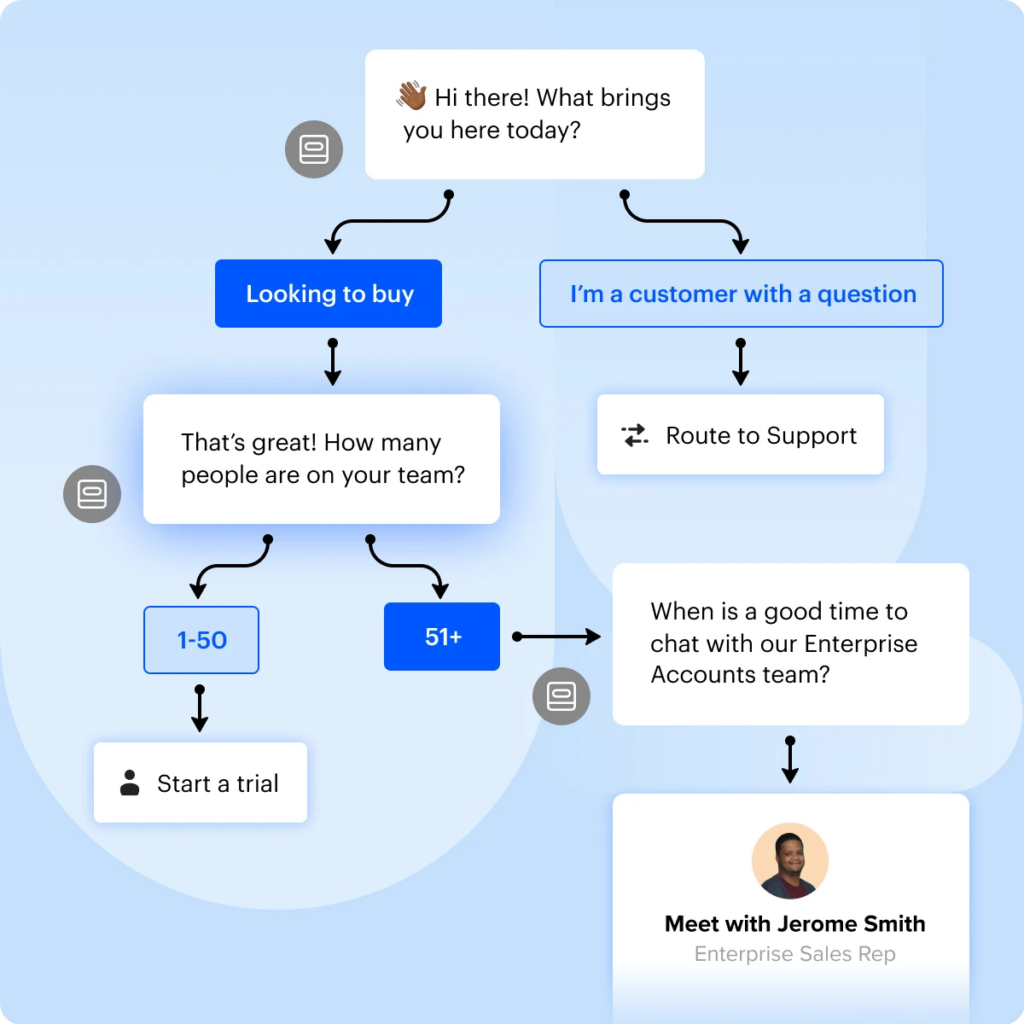
Got a chatbox on your website? It’s your lead-catching net. But you’re faced with a dilemma – either have a team always on standby to type in every message, draining resources, or leave it unmanned, missing potential leads.
Don’t worry, there’s a smarter way to handle this.
Automation idea, benefits, and tips:
AI-powered chatbots are your answer. These smart tools manage the preliminary ‘hello, how can I assist you’ chats and ping your human team only when there’s a complex query. It’s like having an extra team member who works round-the-clock without needing a coffee break.
Simply integrate a trusted solution like Intercom, and you have automated those key initial interactions with potential customers.
Real-world automation example:
Intercom itself dealt with a messy issue: a flurry of anonymous conversations on their chat, leaving their sales team puzzled about who’s a potential lead and who’s an existing customer with a quick query. So what did they do? They programmed their chatbot, Operator, to ask one simple but game-changing question: “Are you an Intercom customer?” Based on the response, the conversation got routed to the sales or customer support team, making everyone’s life a heck of a lot easier.
The impact? “More than two-thirds of anonymous leads answered the question, and about half were existing customers,” according to Sebastian McKenna Long and Emily O’Byrnes, Relationship Managers at Intercom. This led to significant time savings for the whole team and improved customer experiences across the board.
Check out their in-depth account here for all the juicy details.
3. Turn your lead forms data into new CRM records automatically
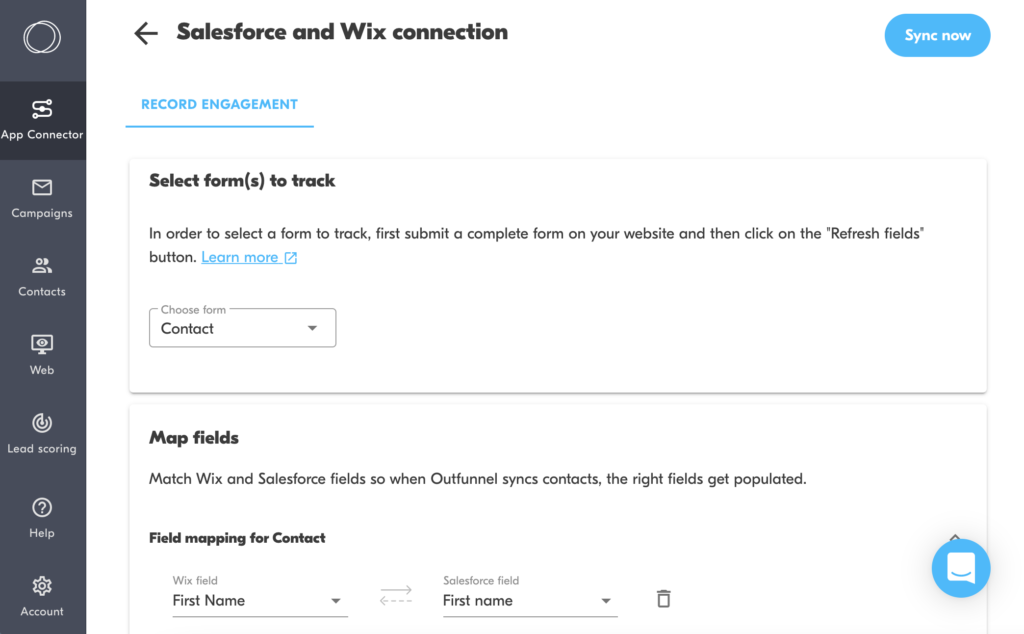
As soon as a lead drops in, either from a web form or email, the clock starts ticking. The immediate goal? Zip their details straight into your CRM to work on it in a systematic fashion. But hold on – usually, this involves the tedious task of manual entry. And let’s face it, typos like “johndoe@gnail.com” aren’t just embarrassing; they’re deal-breakers.
Automation idea, benefits, and tips:
What if you could eliminate the manual hassle altogether?
Imagine a system where each form submission or email from a new lead is instantly synced with your CRM. This means your leads are immediately put into personalized email sequences or nurture campaigns. So they receive your tailored offers and messages while their interest is still sky-high.
To offer such a seamless experience, Outfunnel has you covered. If you’re a Pipedrive user, for example, we offer a slick automation that can effortlessly sync your Contact Form 7 entries straight into your CRM, supporting all your custom fields. No need to act surprised; it’s what we do, connecting your marketing and sales tools without skipping a beat.
4. Put your sales email outreach on autopilot
Sending emails is as fundamental to sales as, well, selling. Even in this age of social media bombardment, a well-timed, carefully crafted cold email can be your golden ticket to sales paradise.
But let’s be real here. Juggling between sorting leads, personalized messaging, and follow-ups can be like a one-man band playing a symphony.
Right now, you’re probably going through your CRM, creating lists, writing individual emails, and then hitting send. After that, it’s a game of “Will they or won’t they respond?” You manually log the replies, note down reminders to send follow-ups, and might even have sticky notes all over your desk reminding you to follow up with Ms. Johnson for the second time.
It’s not just mentally draining; it’s a circus of inefficiencies.
Automation idea, benefits, and tips:
Ready for the game changer? Automated sales email sequences. With tools like QuickMail, you can automate your email outreach without losing that personal touch. These platforms allow you to create messages based on your leads’ behaviors and interactions, so every email is as relevant as the last.
Real-world automation example:
BrandStar, a marketing agency, had a labor-intensive sales process, heavily relying on manual email outreach. Eric Goldstein, their Director of Customer Engagement and Marketing Automation, needed a scalable solution and found it in Mailshake. This tool allowed for automated, sequenced emails tailored to the actions and data of leads in their CRM. The result? An astonishing 30,000% increase in emails sent, from 1,000 emails a month to as many as 10,000 in a single day.
For a deeper dive into their success story, you can read more here.
5. Synchronize contact data across all tools effortlessly
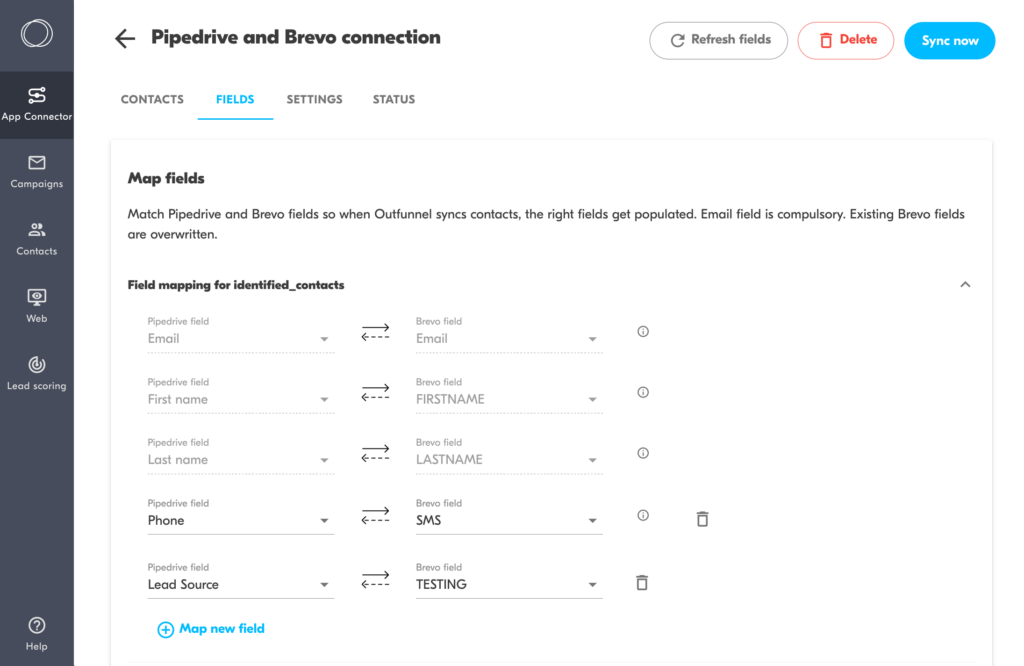
Accurate contact data is crucial for effective sales and customer management. The goal is straightforward. Keep tabs on who you’re selling to and ensure you have the most current data to fuel your outreach efforts.
Currently, many sales reps are in one corner with their contact database (a CRM usually), and the marketing folks are in another with theirs. What’s the big deal, you ask? Well, this mismatch is like trying to sing a duet where both are singing from different song sheets. The result? Confused campaigns, scrambled outreach, and a lot of manual work to play ‘match the data.’
Automation idea, benefits, and tips:
The good news is that this task can be automated. Tools like Outfunnel and others can sync your contact data across all your platforms. So, when you update information in one application, the rest follow suit automatically. This doesn’t just save time; it also enhances data accuracy and minimizes human error.
For those who are not tech-savvy, setting up this automation is fairly straightforward. Let’s use Outfunnel as an example:
- Connect the tools: Link your CRM and other platforms to Outfunnel.
- Specify rules: Choose what changes in one software should be reflected in the others.
- Run a test: Verify that the data syncs correctly across both platforms.
- Activate: Once you’re satisfied, enable the automation.
And that’s it. You’ve just set yourself up for more efficient and error-free data management.
Real-world automation example:
Now, let us share how Alight Analytics hit a home run here. They faced the mammoth task of syncing data between Pipedrive and Mailchimp. Enter Outfunnel. Not only did it keep their data in perfect harmony, but it also allowed for automated email campaigns based on actions taken in Pipedrive. Naomi Blair, their Marketing Operations Manager, couldn’t be happier. She says, “The connection between Outfunnel and Pipedrive has been seamless. It’s also saving us a ton of time by removing the manual work we used to do.” You can read the entire case study here.
6. Turn your lead prioritization roulette into a laser-focused strategy with data-driven scores
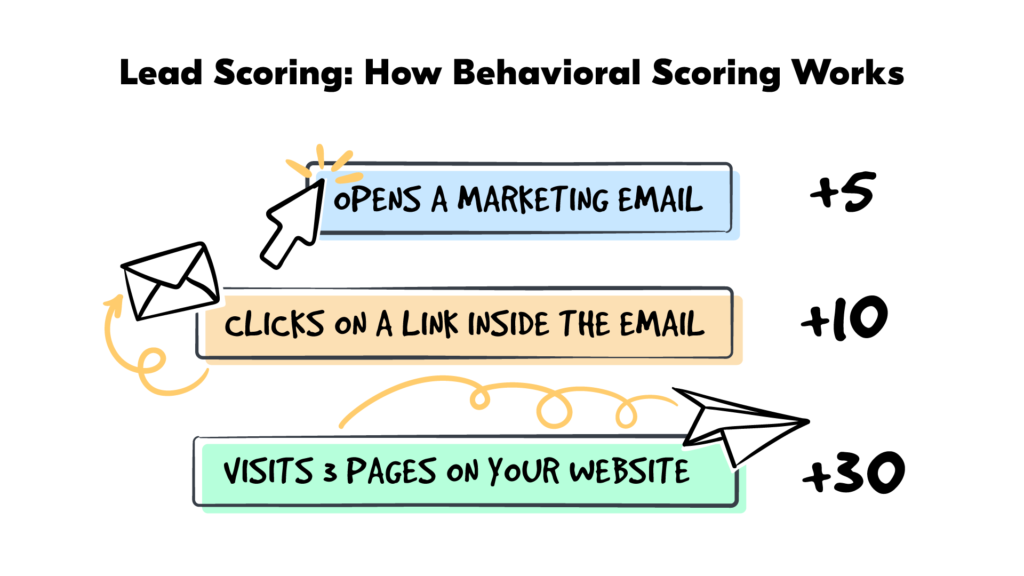
You need to figure out which leads are piping hot and ready for the sales oven and which ones need more time to marinate.
In the olden days, salespeople had to play a guessing game of “Eeny, meeny, miny, moe” to decide which leads to pursue. That method is as effective as shooting arrows blindfolded and hoping you hit the bullseye. In a world where time equals money, this inefficiency isn’t just annoying; it’s financially draining.
Automation idea, benefits, and tips:
With modern lead scoring software, you can move past gut feelings and employ actual data to decide who gets your attention first. Outfunnel’s got your back here as well. Not only does it sync beautifully with your CRM, but it also adds a dash of sophistication with behavioral lead scoring.
If the tech setup gives you jitters, relax. Outfunnel is basically plug-and-play for lead scoring.
Real-world automation example:
Remember our pals at Alight Analytics? They could have continued to live life in the guessing lane. Instead, they made the savvy move to automate lead scoring and nurturing, freeing their sales team from constant uncertainty. According to Naomi Blair, they now have dynamic filters in Pipedrive that work harmoniously with Outfunnel. Sales reps can now focus on leads that are actually interested instead of shooting in the dark.
7. Automate lead routing to assign each rep their best shots
Now that we’ve discussed prioritizing your leads let’s discuss the next logical step: getting those hot leads into the hands of the right people fast. Think of it like this: Prioritization tells you who to call first, but routing focuses on who should make that call.
If you’re doing this manually, it’s like being a matchmaker, setting up dates between leads and sales reps. It’s charming but not very efficient. Plus, you might pair a newbie rep with a VIP client, which, let’s be honest, may not end in a happy marriage.
Automation idea, benefits, and tips:
Here’s the deal. Automated lead routing takes the guesswork out of the equation. You set the rules, like who’s good at what or where, and the system automatically sends leads to the reps who are best suited to handle them. Pipedrive has a straightforward automatic lead assignment feature that does just that. It’s handy for ensuring leads are matched quickly with the right rep. That means better follow-up and, yes, better conversion rates.
Real-world automation example:
Pipedrive had a bottleneck: the manual lead assignment was slowing things down. Their Sales Operations Manager, Joe Kenny, highlights the issue: “Managers were swamped; leads waited.” They implemented automatic assignment, and now leads are allocated to reps in seconds.
The key takeaway? It cut down the waiting time for leads and made the sales process more efficient. Joe Kenny cites a Harvard Business Review study: “Contact a lead within the first five minutes and your chances of closing shoot up.” You can dive deep into this case study here.
8. Stop endless email exchanges with automated meeting scheduling
Setting up meetings is the bread and butter of sales. You’ve got a hot lead, and you need to talk to them fast. But before you get there, it’s a whole lot of, “Are you free this time? No? How about now?”
Right now, you’re sending tons of emails to book one meeting. A Calendly study found that it takes an average of 7.3 emails to get one meeting on the books. Each delay could be a lost sale or an opening for a competitor to slide in. Plus, let’s not forget humans mess up. Double-booked anyone recently?
Automation idea, benefits, and tips:
Let’s cut to the chase. Here’s your magic bullet: automated meeting scheduling through Calendly. Your leads see when you’re available. They choose a time. Ding! You get an email notification that a meeting is booked, and no endless back-and-forths.
And because we want to make your life even easier, Outfunnel has pre-built integrations to take it to the next level. We support Calendly-Pipedrive, Calendly-Copper, Calendly-HubSpot and Calendly-Salesforce integrations. Basically, once that meeting is set, it’s not just a calendar event; it’s actionable data. Your new appointments automatically appear as new contacts in your CRM complete with any custom field info you might have included.
Real-world automation example:
Signpost had too many leads and not enough time. Julia, their go-to sales manager, used Calendly to let people book their own meetings. This small change made their sales cycle faster and let the team focus on making calls, not setting up appointments.
Curious how they did it? Find out more here.
9. Turn your customer conversations into insights and action
Okay, let’s start simple. Sales calls are your jam. You chat with customers, listen to what they’re saying, and try to find ways to help them. Simple as that. But how often have you hung up and thought, “Dang, what was that thing they said 10 minutes in?”
Right now, maybe you’re jotting notes during a call or recording the chat to listen later. But let’s be honest, listening to an hour-long call to find a 30-second bit of info is no one’s idea of a good time. It’s boring, and it wastes your day.
Automation idea, benefits, and tips:
Here comes the fun part. Imagine a tool that listens to your calls, writes down everything that’s said, and then gives you pro tips for upping your game. That’s what conversation intelligence software like Gong, Avoma and Otter can help you with.
What’s the tool going to do?
- It listens to your calls. Yes, every single word (with permission).
- Transcribe those calls so you can say goodbye to post-call note-taking.
- Analyze your conversations and surface smart recommendations for doing better in the next meeting.
Real-world automation example:
Drift, a conversational marketing platform, was grappling with rapid growth and haphazard sales processes. Armen Zildjian, their VP of Sales, was seeking a way to remove inefficiencies in their sales pipeline and make the entire team more consistent. This is when they turned to Gong. Gong analyzed and transcribed sales calls, eliminating guesswork and increasing cross-department collaboration. The results? Pipeline reviews transformed from a chaotic mess to a structured, insight-driven process. For a deeper dive into how Drift revolutionized its sales process with Gong, you can read more here.
10. Eliminate client onboarding hiccups with automated welcome sequences
You’ve successfully converted a prospect. Kudos! Now comes the onboarding process, a critical phase where you’ve got to send welcome emails, set-up instructions, and the ever-important first steps guide. Why? You want your new client to smoothly transition into becoming a loyal customer who understands your value proposition and knows how to navigate your product or service.
If you’re still doing onboarding manually, let’s say it’s the business equivalent of churning butter by hand, inefficient, and a little outdated. You spend hours crafting individual emails, double-checking if you’ve attached the right documents, and then worrying whether your tone was “welcoming but not desperate.”
Automation idea, benefits, and tips:
Here’s the scoop. Automating your onboarding process is like having a virtual concierge for your new clients. No more manual email drafting or worrying if you attached the right PDF. Sendgrid, our recommended tool, allows you to set up sequences that send out a tailored welcome package to each new client right when they need it.
The benefits? First off, zero human error. Second, you’ll reclaim precious hours that can be better spent actually engaging with your new client or landing the next big fish. And let’s not forget automated emails mean faster, more consistent onboarding, which translates to happier clients and quicker activation.
How to pull it off? Well, here’s a simplified guide:
- Pick your tool: You can use Sendgrid or a similar software.
- Set your sequence: Draft those confirmation emails, welcome messages, and all the ‘getting started’ info your client might need.
- Define the triggers: Decide what action, like a finalized contract, will set this automated wonder in motion.
- Trial run: Test the sequence to ensure everything’s hunky-dory before you set it loose on your clientele.
Bam, you’re done. Onboarding just went on auto-pilot.
Real-world automation example:
Let us talk about our onboarding automation case study. We revamped our user onboarding process by integrating affordable tools like Pipedrive, Outfunnel, and Mailchimp. Our automation journey saved us a staggering 80% of our time while actually boosting activation rates. By addressing common user friction points through automated emails, we elevated the trial-to-paid conversion rates. This full-throttle automation approach freed up valuable time, enabling us to focus on high-potential signups without sacrificing personalized customer interactions.
11. Turn invoicing from a chore to a snore
Ah, you made it! You’re at the end of our automation journey, and what better note to end on than the process that actually gets you paid? Invoicing!
So, here’s the deal. You’ve spent your days charming clients, crushing quotas, and juggling a dozen other tasks. Now you’re stuck playing email ping-pong with the accounting department? Not ideal. Invoicing manually isn’t just tedious; it’s a buzzkill.
Automation idea, benefits, and tips:
What if you could outsource that last mile? We are talking about automating the invoicing process. Especially if you’re in the SaaS game, automated invoicing is not just smart, it’s the industry standard. Platforms like Chargebee are what the smart kids in the class are using.
For other business types, fear not. Many accounting software options out there integrate directly with your CRM. Think QuickBooks or Xero. These guys play nice with just about any CRM and can help you automate the invoicing journey.
Here’s how to automate your invoicing:
- Choose software: Pick an invoicing tool. Chargebee is great for SaaS. QuickBooks and Xero should work for everyone else.
- Link it to your CRM: It’s plug-and-play. Get your CRM and invoicing software talking.
- Set rules: Choose when invoices get sent out. No surprises.
- Test: Give it a dry run. Make sure it’s working how you want.
The result? A fully automated invoicing system that frees up your time and lowers the chance of human error. Your accounting team might actually start to miss you.
Closing thoughts: Time to apply your newly created sales automation playbook
We’ve dived deep into 11 key sales tasks, illuminated their existing challenges, and showcased how automation can turn these chores into effortless wins. We’ve even sprinkled in tips, tools, and real-world examples, adding actionable context.
Now you have your tasks lined up, the stage is set, and automation is the main act. Let’s not just stop at understanding sales automation; let’s put this knowledge into practice and truly embody the spirit of automation to give your sales productivity numbers a much-needed boost.
That’s where Outfunnel comes in.
We don’t just stop at integrating your sales and marketing data. We take it a step ahead with an intelligent workflow platform that supercharges your favorite CRM and marketing tools.
So go ahead and take that 14-day free trial for a spin. No credit card dramas, just real solutions.
Your sales process won’t just be efficient. It’ll be Outfunnel-efficient.

